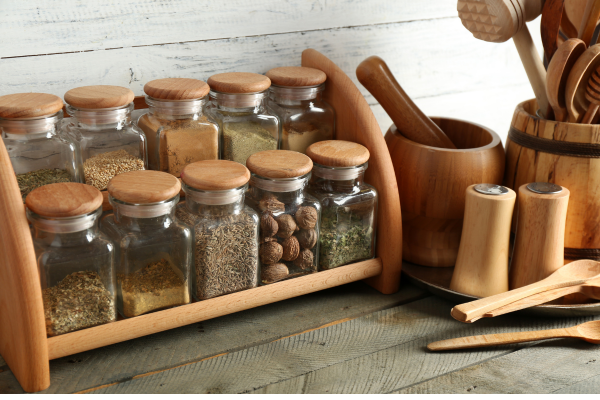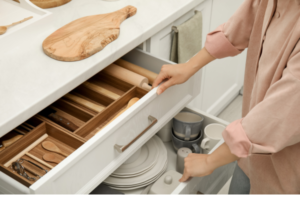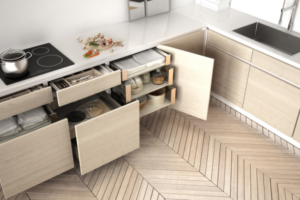Introduction:
An efficiently organized kitchen is the heart of culinary efficiency and a serene cooking experience. Among the various elements that contribute to kitchen organization, the arrangement of utensils plays a pivotal role. The process of organizing utensils isn’t merely about tidying up; it’s about optimizing space, enhancing accessibility, and simplifying the cooking process. This comprehensive guide aims to delve deeper into ingenious strategies and sought-after solutions to proficiently organize your utensils, thereby transforming your kitchen into a functional haven.
Subheading 1: Assess Your Needs
Begin by conducting a thorough assessment of your utensil inventory. Distinguish between frequently used tools and those rarely employed. Dispose of duplicates, broken items, or utensils that serve no functional purpose. This initial step is crucial as it sets the stage for a streamlined and personalized organization system that caters specifically to your culinary requirements.
Subheading 2: Drawer Dividers and Inserts
Utilize the space in your kitchen drawers effectively by employing dividers and inserts. These tools help segregate utensils based on size and type, ensuring an organized layout. Adjustable dividers can be customized to accommodate various utensil dimensions, preventing clutter and simplifying access during meal preparation.
Subheading 3: Leveraging Wall and Cabinet Space
Explore the potential of vertical spaces in your kitchen by installing wall-mounted racks, hooks, or magnetic strips. These innovative solutions are ideal for storing frequently used utensils such as ladles, spatulas, and whisks. Opting for magnetic strips or hooks not only saves drawer space but also adds an artistic flair to your kitchen, turning utensils into decorative elements.
Subheading 4: Hanging Rails or Racks
Maximize under-cabinet space by installing hanging rails or racks to house pots, pans, or larger utensils. This approach optimizes cabinet storage while keeping essential tools easily accessible. Additionally, the visual appeal of neatly arranged hanging utensils can impart a stylish touch to your kitchen decor.
Subheading 5: Stackable Containers or Jars
Consider utilizing stackable containers or labeled jars to organize smaller utensils like measuring spoons, spatulas, or cooking brushes. These containers not only declutter countertops but also add a touch of elegance to your kitchen space. Clear containers or labeled jars enhance visibility and expedite the retrieval of specific utensils.
Subheading 6: Innovative Storage Solutions
Explore customized storage solutions such as pegboards, drawer pegs, or hanging baskets to further optimize space utilization and tailor your organization system according to your preferences and available space.
Subheading 7: Customized Solutions and Innovations
Tailor your organization system to suit your specific needs. Consider innovative solutions such as pegboards, drawer pegs, or hanging baskets to further optimize space and streamline access to utensils.
Subheading 8: Sustainable Storage Solutions
Consider incorporating sustainable storage options into your kitchen organization. Utilize eco-friendly materials such as bamboo drawer dividers, recycled plastic containers, or glass jars for storage. These sustainable choices not only contribute positively to the environment but also add a unique aesthetic appeal to your kitchen space.
Subheading 9: Categorization and Zone Planning
Categorize your utensils based on functionality and usage patterns. Create designated zones in your kitchen, such as cooking, baking, or food preparation areas. Allocate specific storage spaces for each category of utensils, making it easier to locate and return items to their designated spots after use.
Subheading 10: Seasonal or Occasional Utensils
For utensils used seasonally or occasionally, consider alternative storage solutions. Utilize underutilized spaces, such as the top shelves of cabinets or storage boxes placed in less accessible areas, to store items like holiday-themed utensils or specialized cooking tools. This approach ensures these utensils remain accessible when needed without cluttering easily reachable spaces.
Subheading 11: Maintain and Review Organization Regularly
Regularly reassess and maintain your utensil organization system. With time, your culinary needs may change, leading to alterations in utensil usage. Periodically review and rearrange the organization system to accommodate these changes. Reevaluate the efficiency of your storage solutions and make adjustments as necessary to optimize functionality.
Subheading 12: Utilizing Kitchen Islands or Carts
If you have a kitchen island or cart, utilize them as additional storage space for utensils. Incorporate hanging racks, hooks, or baskets on the sides or underneath to store frequently used utensils. This strategy not only maximizes storage but also ensures essential tools are within easy reach during food preparation.
Conclusion:
Efficiently organizing kitchen utensils is an ongoing process that evolves with changing needs and preferences. By embracing sustainable storage, categorization, and periodic reassessment, you can maintain an orderly and functional kitchen space. Implementing strategies like zone planning, accommodating seasonal tools, and utilizing additional storage areas ensures optimal organization. Through consistent maintenance and adaptation of your organization system, you can create a kitchen environment that supports seamless culinary experiences while reflecting your unique style and efficiency.



